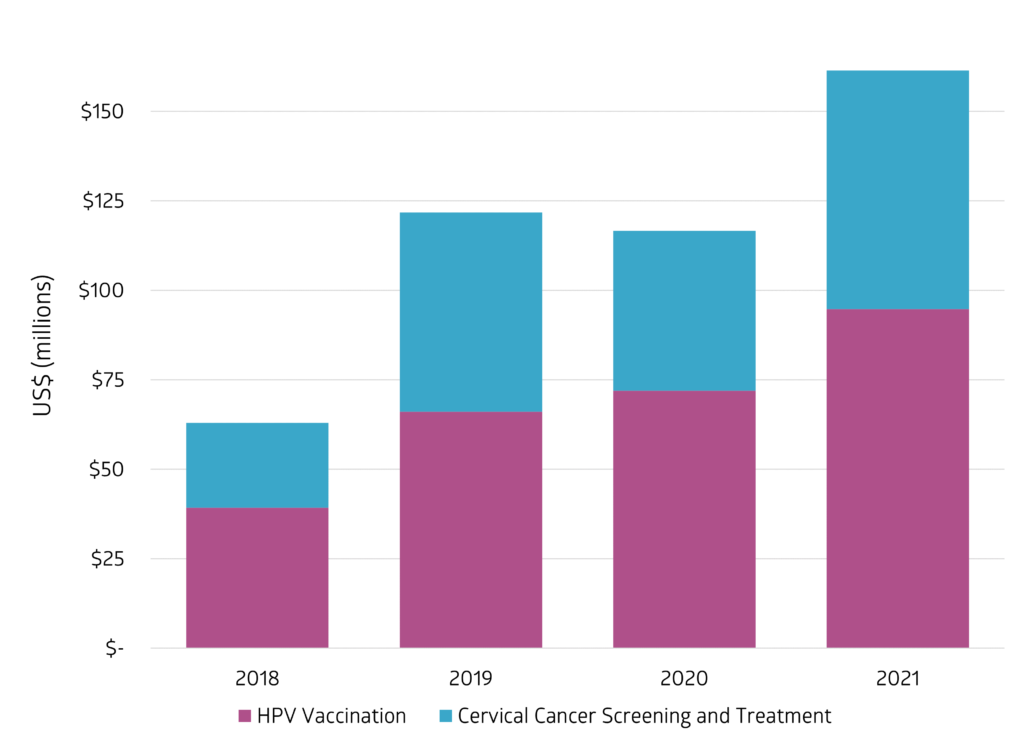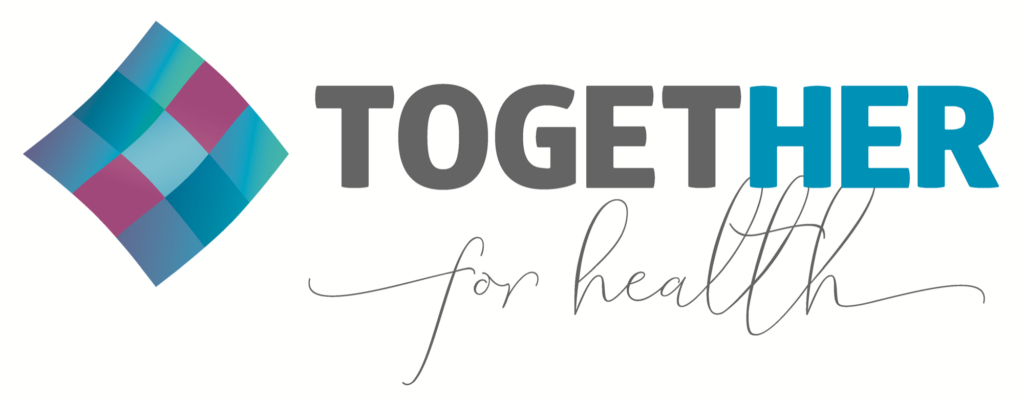Good News Toward an Unprecedented Goal – Ending Cervical Cancer
On November 17th, 2020, the world celebrated the launch of the Global Strategy to Accelerate the Elimination of Cervical Cancer by the World Health Organization (WHO), the first-ever global plan to actually end any cancer. In short, the strategy lays out three key targets:
- Vaccinating 90% of girls against human papillomavirus (HPV) by 15 years of age;
- Screening 70% of women at ages 35 and 45 for precancerous cervical lesions; and
- Ensuring that 90% of those women in need receive treatment for cervical disease.
In two short (but unique) years, the anniversary of that launch has become the day that advocates for this groundbreaking plan take stock of progress, celebrate achievements, and hold decision-makers accountable for their commitments. If you haven’t done so, please do check out the WHO’s dedicated site to see how the world is marking this important milestone.
For our part, TogetHER is celebrating the launch of our fourth annual analysis of funding for cervical cancer prevention in low-income countries (LICs) and lower middle-income countries (LMICs), summarizing resources for HPV vaccination and cervical cancer screening and treatment in 2021.
In the spirit of the day, the report’s findings are certainly cause for celebration:
- Estimated funding for HPV vaccination in LICs and LMICs in 2021 totaled $94.7 million, a large increase of 31.7% over 2020. Higher investment was seen in almost every funder category, led by Gavi, the Vaccine Alliance’s $22 million increase between 2020 and 2021.
- That $94.7 million total for 2021 is over 60% higher than the $59.0 million three-year funding average for HPV vaccination in LICs/LMICs from 2018 to 2020.
- Total funding for cervical cancer screening and preventive treatment in LICs and LMICs is estimated at $66.6 million for 2021, an increase of 49.2% from 2020, due heavily to a major uptick in funding for the Go Further program providing screening and treatment for women living with HIV in countries served by the U.S. President’s Emergency Plan for Aids Relief as well as a large increase from Unitaid.
- Funding for cervical cancer screening and treatment in LICs/LMICs in 2021 was 61.2% above the $41.3 million three-year funding average from 2018 to 2020.
Funding for Cervical Cancer Prevention in LICs/LMICs 2018-2021

Across these two key interventions, we’re looking at all-time highs in support for lifesaving cervical cancer prevention programs in low-resource countries, investments that will keep women healthy today and in the future, preserving families and communities while boosting economies.
And it gets better. Alongside these investments, we’re seeing new HPV vaccine suppliers entering the field, which means more vaccines and likely reductions in price. And that supply will go a lot further as countries consider shifting from two- and three-dose HPV vaccine regimens to single doses, which data suggests provides comparative preventive effect. On the screening side, updated WHO guidelines emphasizing HPV DNA testing should boost the uptake of this option, reducing the need for many women to travel to clinics for screening and allowing for population-wide testing.
But even as we celebrate, we can’t forget that there is a long road ahead. Despite increased funding, the world remains woefully far off track to mobilize the $10.5 billion the WHO estimated would be necessary to fund cervical cancer elimination in LICs and LMICs. At the current pace, only 15% of the projected need will be made available by 2030.
Our report allows us to highlight the critical contributions from numerous donors who are prioritizing women’s health, and to offer suggestions on critical next steps. It also reminds us that those donors are too few in number, and that there’s a significant gap between where we are now and where women around the world need us to be in order to meet the WHO’s 90-70-90 targets and make cervical cancer history.
We’re so proud of how far the effort to end this preventable disease has come in just the four short years since we first published this report: an evidence-based global strategy, a substantial increase in resources, and a world energized to end cervical cancer forever.
Our collective action is saving lives. Let’s celebrate these tremendous accomplishments. And then, let’s get back to work.
“Nurses listen during a training program” by World Bank Photo Collection is licensed under CC BY-NC-ND 2.0.
